The main section of the Cinque Terre National Park, which is at the same time the cultural property inscribed on the UNESCO’s World Heritage List, consists of five small villages on the coast of the Ligurian Sea. Between them and farther inland there are numerous walking trails and this entire area has with time become incredibly popular and consequently full of tourists. The villages may be visited within a day, transferring by train from one to the next, and it is also possible to stay several days and visit all the villages as well as the entire national park leisurely, using a map and well marked trails.
As far as walking and such way of visiting the area are concerned, it is important to emphasize that not all the trails are always open. The information on this subject may be found out in specialized tourist offices that are located both in La Spezia and in each of the villages, where you may also buy the entrance tickets for the national park. At the time I was there, the trails between Corniglia and Manarola, as well as between Manarola and Riomaggiore were closed. Very ambitiously I thought I could do the trails that were open, but this plan changed in the course of the day as I went to visit the villages.
Namely, since I don’t have a lack of ambition, I first decided to take the train to the place called Levanto. It does not belong to the national park, but from there to the village of Monterosso, which is the farthest from La Spezia, there is a 7-8 km trail that may be covered in around two and a half hours. I was told that the trail from Monterosso to Vernazza is significantly steeper and although only some 4 km long, it requires an hour and a half, and even longer.
Once in Levanto, however, I first headed for the beach, since I wanted to dip my feet in the shallows and I can report that the water was chilly. So, I soon put my shoes back on and started uphill.
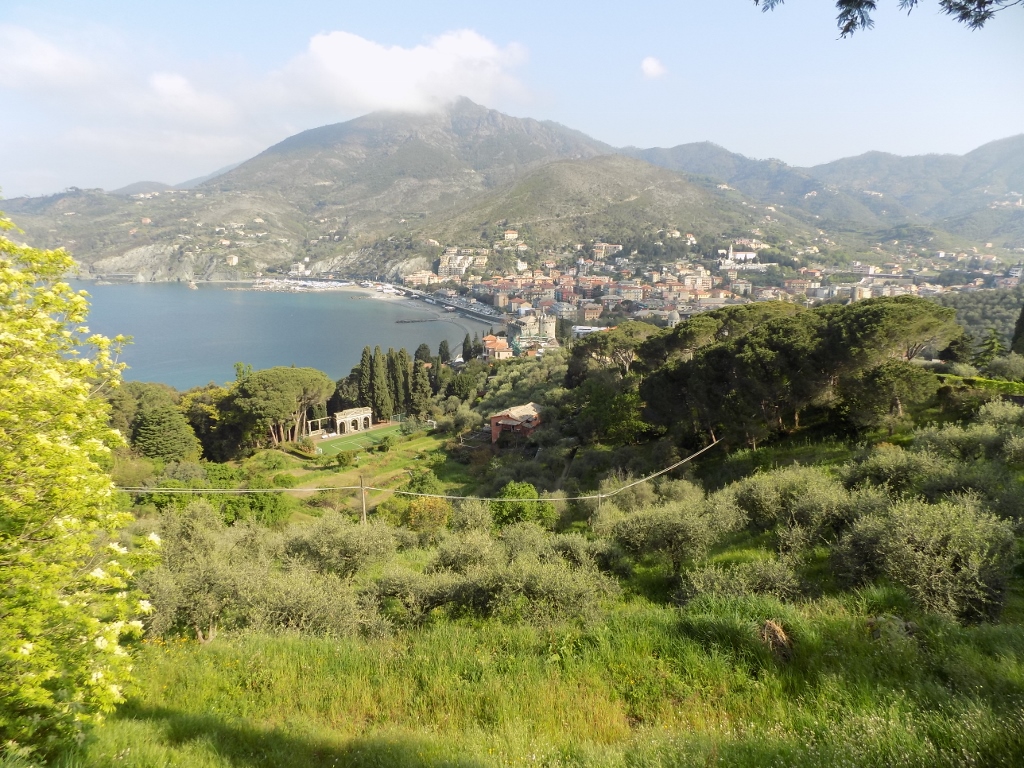 View at Levanto, I have already climbed the hill
View at Levanto, I have already climbed the hill
The trail was rather steep – first some steps, then a road, but with time it turned into a proper walking trail that consisted of rocks and soil, and only here and there one could see human intervention in the form of some improvised wooded or stone steps that could possibly facilitate the moving.
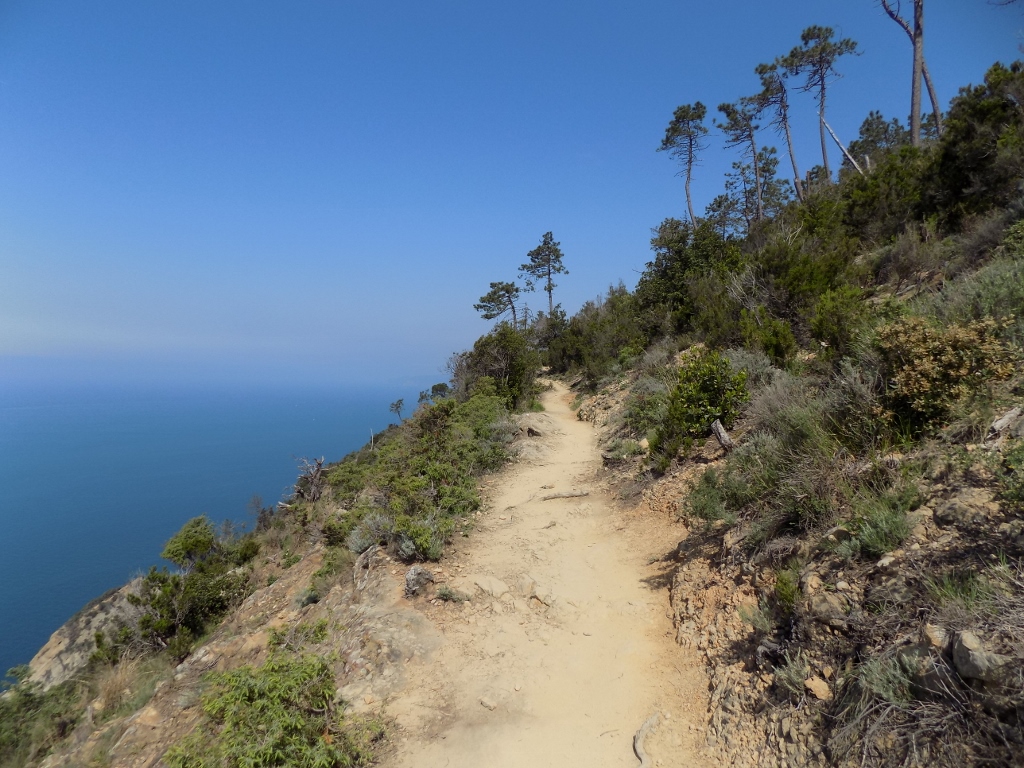 A part of the trail between Levanto and Monterosso
A part of the trail between Levanto and Monterosso
Apart from my not-too-great fitness, a significantly larger problem lay in the fact that I did not have proper footwear. Everybody, absolutely everybody I came across had proper hiking boots. And that is the real thing. That much I know myself. But, not having quite an exact idea of what I was to face, plus I didn’t feel like carrying my hiking boots from Belgrade “just for one day,” I did have some sportive shoes on my feet, but they were neither proper trainers nor did they have the quality sole which is deemed a must especially during the descend when there may be slipping. Be as it may, I had to rely on my agility and be extremely careful. It turned out ok, but I realized I should not tempt my fate, so once I reached Monterosso, I made no further attempts at hiking. As it would turn out later on, there was no time for that either.
Still, that two and a half hour walk from Levanto to Monterosso was not in vain. The day was fantastic and I felt truly happy enjoying the wonderful scenery around me, including the sea.
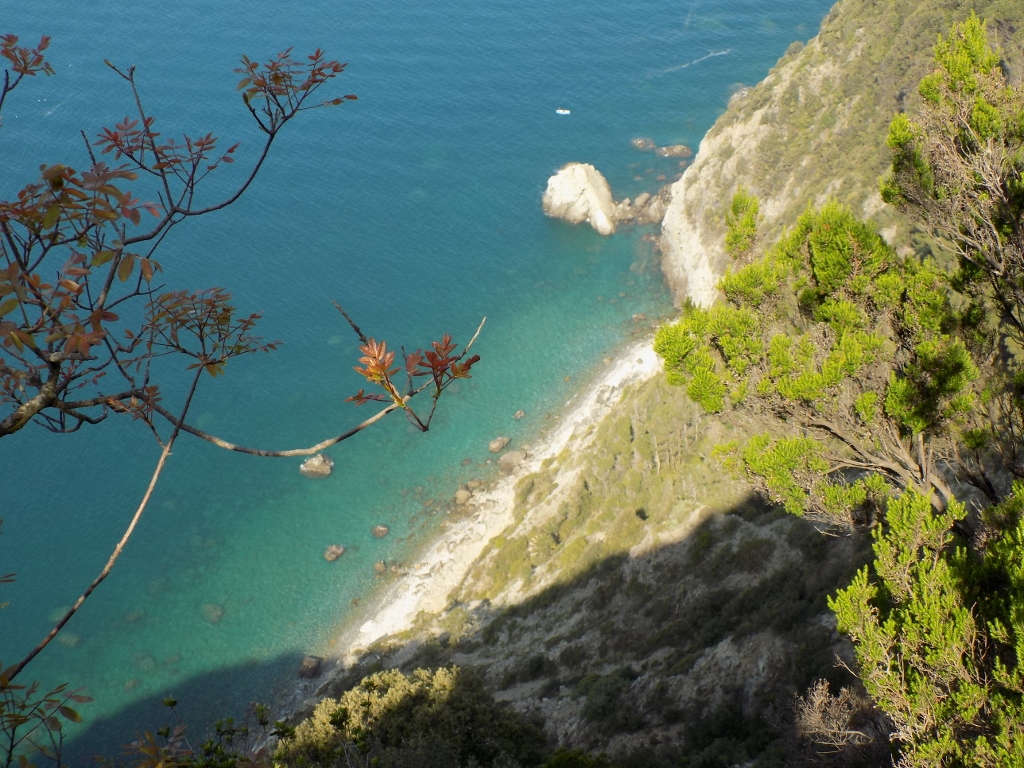 Shore of the Ligurian Sea
Shore of the Ligurian Sea
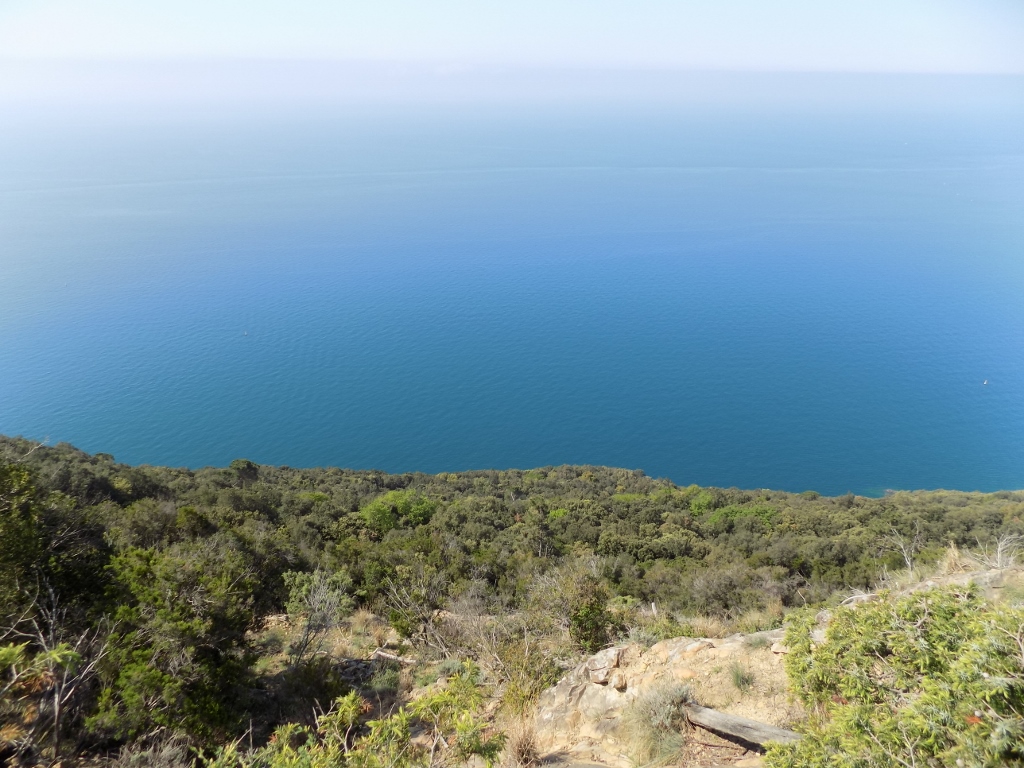 Ligurian Sea
Ligurian Sea
During this walk I witnessed something that made a truly great impression on me. Namely, there were other hikers on the trail as well and at some point there was an elderly French couple walking in front of me. All of a sudden, the woman bent, picked up some trash that she saw by the trail, put it into a bag and kept on walking. And I used to think I was good for not leaving anything behind me in nature! Many years ago when I was an active hiker, a more experienced lady criticized a few of us for leaving the left-over pieces of apple behind. We justified ourselves by saying it was organic and the animals were going to eat it. The lady told us that the animals already had in nature everything they needed and there was no reason for leaving any kind of waste behind us. I thought about it, agreed and never again left anything behind, but what I saw here was an improved version of making sure the environment is not polluted. It was with bitterness that I remembered how in the wilderness of the Djerdap National Park in Serbia, while hiking along the Brnjica canyon, that may be reached only on foot, I came across numerous plastic bags and bottles, fully aware that it was only the local population that was passing there, leaving this waste in their wake. This lady was not even Italian, but for her it was obviously more important that the nature she was passing through was as beautiful and as unspoiled as possible even when she left it than to bother whether it was her country or not. I was absolutely delighted!
So, after almost two hours, I came to an expansion of the trail where a larger number of people were already making a break and the reason was that it was possible to enjoy a stunning view of Monterosso from there.
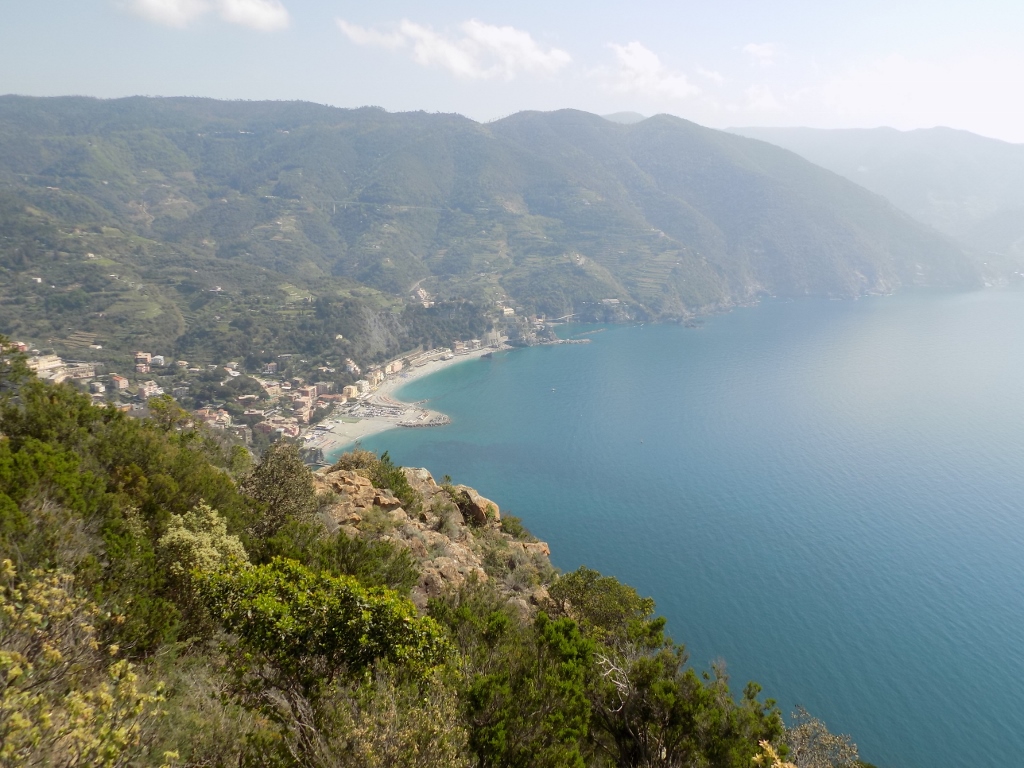 Monterosso al Mare
Monterosso al Mare
From there the trail only went downwards and when you reach the level of the sea, you actually first enter a newer part of Monterosso called Fegina. There I sat in a café on the beach, had a nice rest and then continued farther along the sea, following the signs that pointed towards the centre.
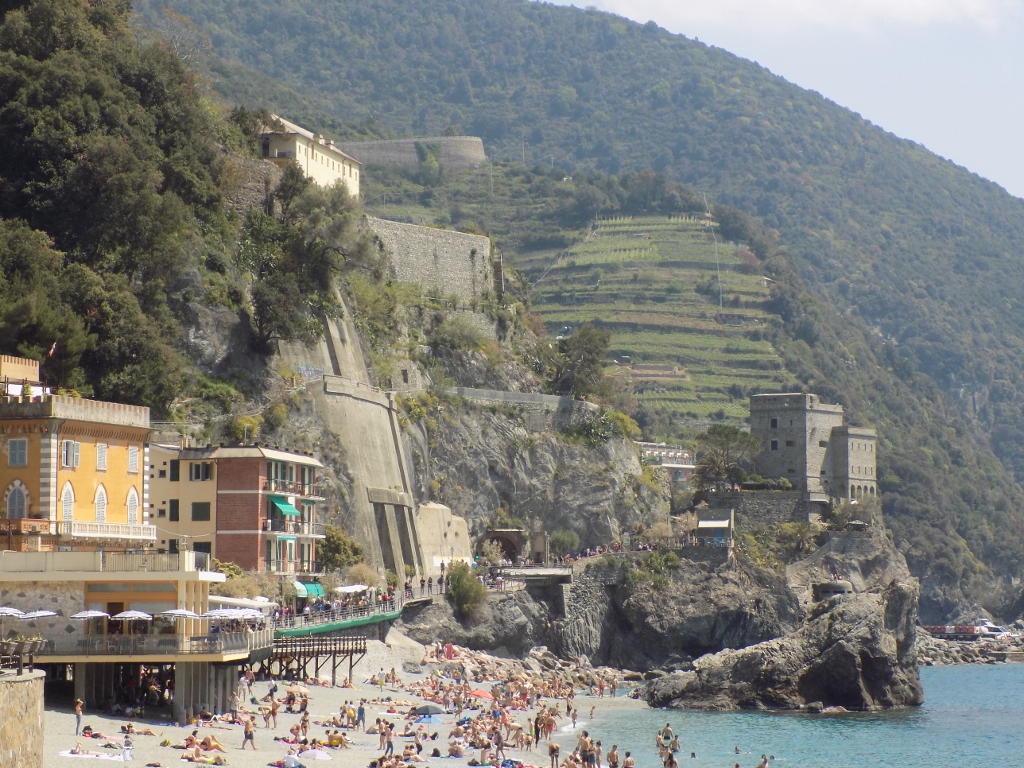 The beach in Monterosso al Mare (Fegina)
The beach in Monterosso al Mare (Fegina)
In fact, that centre is the “right” village of Monterosso that constitutes Cinque Terre and in order to reach it one can follow either a path that goes around a big rock rising from the sea or go through a tunnel. I decided to walk one way around the rock and the other way through the tunnel.
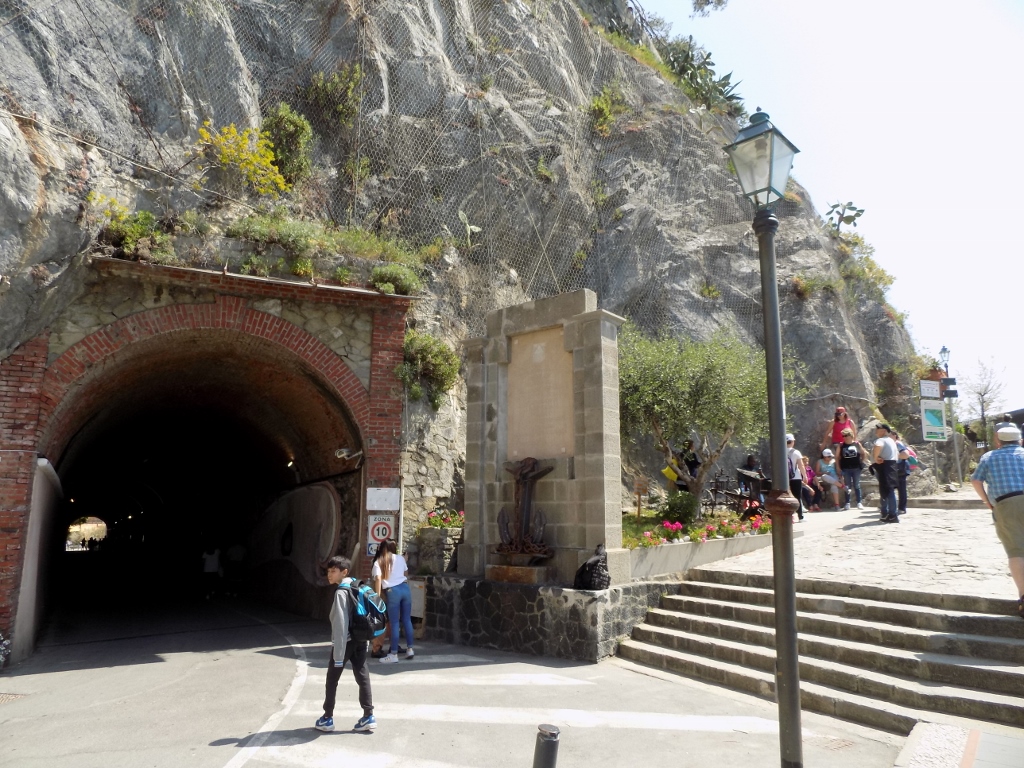 Monterosso al Mare, tunnel to the left and the path around the cliff to the right
Monterosso al Mare, tunnel to the left and the path around the cliff to the right
When you get to the centre, you cannot help being delighted. The place is indeed a gem. It is not very big, so it may be walked around rather quickly, which was what I did.
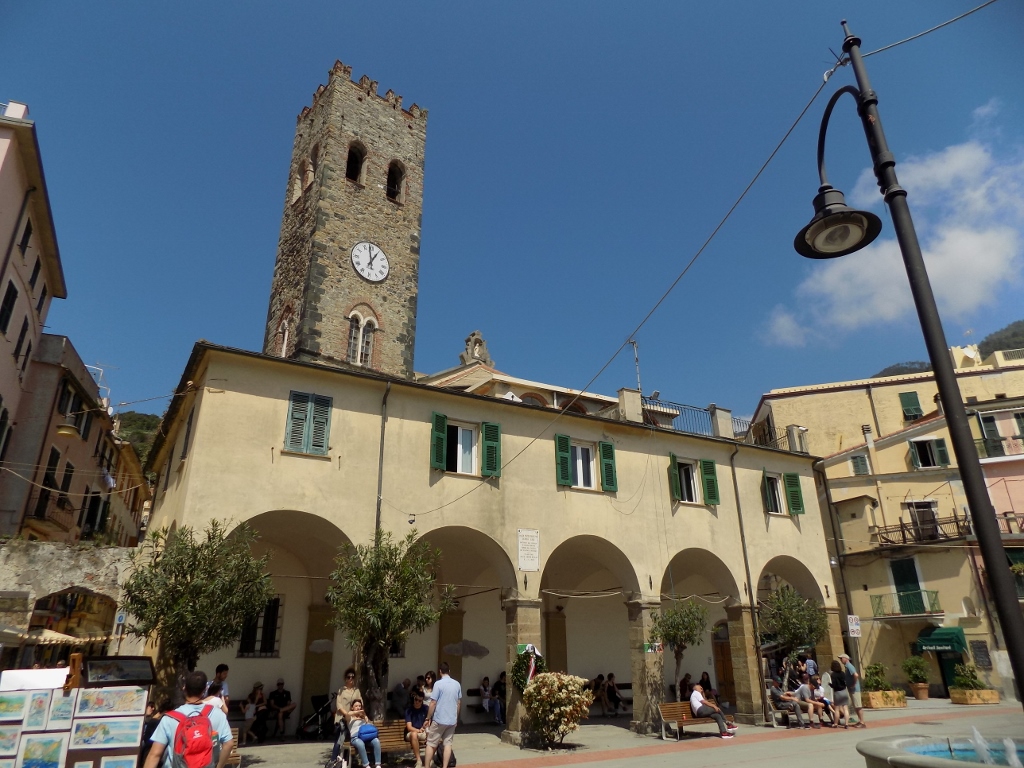 Monterosso al Mare
Monterosso al Mare
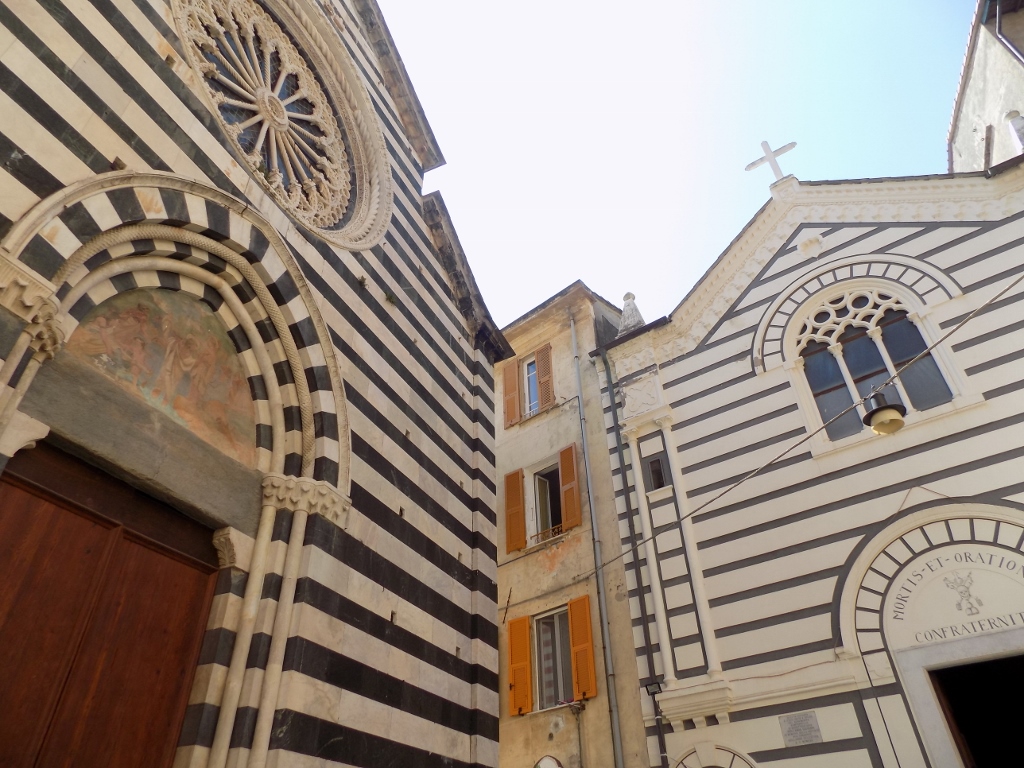 Monterosso al Mare
Monterosso al Mare
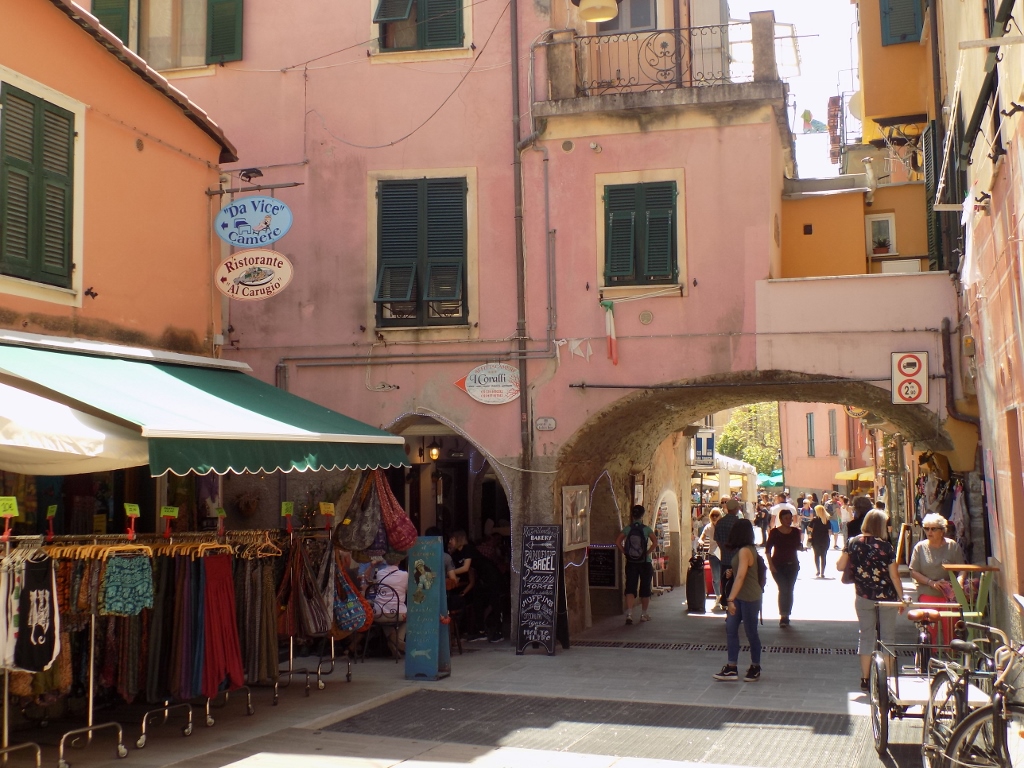 Monterosso al Mare
Monterosso al Mare
I had already planned to have lunch in one of the villages, but at this point I thought I should not do it in the first one, so I decided to do it in the next one, but as I was passing through the small streets filled with restaurants that emitted fantastic aromas, I was really tempted. I persevered and went back to Fegina, since the railway station was there, and then I transferred to Vernazza, the next village.
The exit from the railway station in Vernazza continues directly into a street going down towards the sea, expanding in the end into a square and a small port.
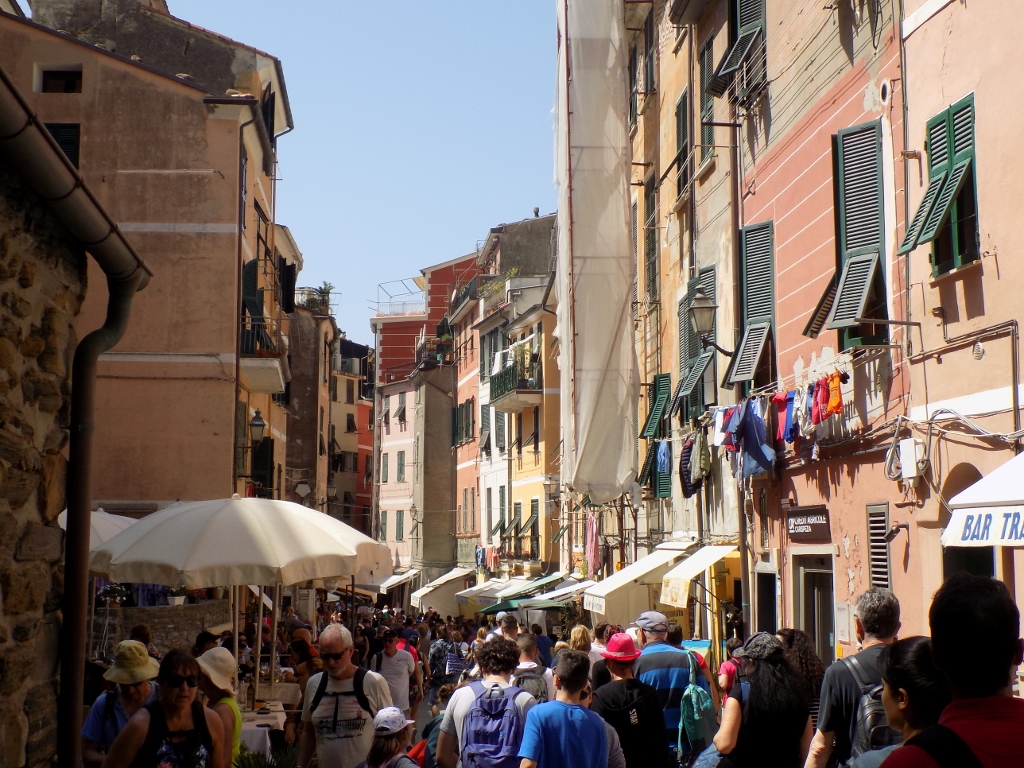 Vernazza
Vernazza
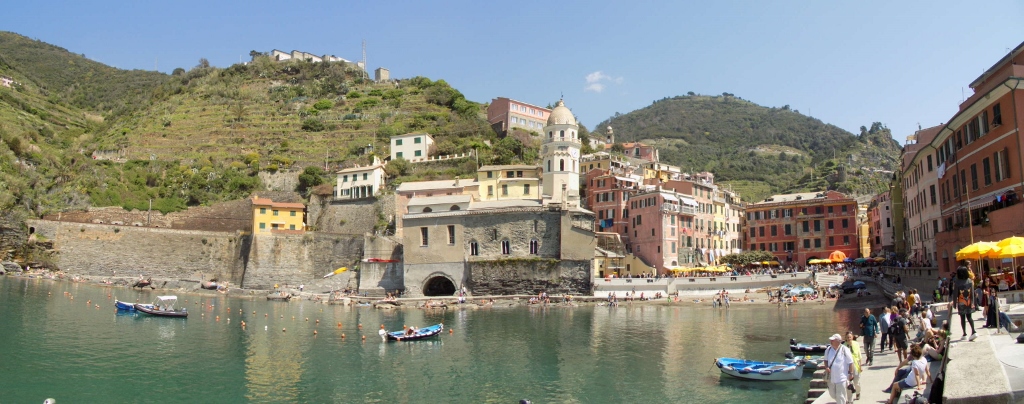 Vernazza
Vernazza
It seems to me that Vernazza is perhaps the most beautiful one of the five villages, but even if it isn’t, it is certainly the most frequently photographed, for it is truly incredibly beautiful. The tall, narrow houses, painted in vivid colours, as well as a fortress rising above one part of the village, together with a few churches, and all of this against the green slopes of the hills, while the sea is on the other side… Yes, it is almost an ideally beautiful little place. Except… Cinque Terre have been there for centuries, but they have become ultra popular only in the last few decades. So much so that even in April it was incredibly packed. I really cannot and neither do I want to try to imagine what it all looks like in June, July and August. Perhaps it would be good to come here in November or in February or the beginning of March, but on the other hand I believe it is crowded even then, while at the same time there is a danger that the weather is awful.
So, I decided to give myself a treat and stopped by a nice restaurant, but it was full, so passing through some narrow streets I first climbed the top of the elevation with the fortress from where there was a stunning view at the village and its environs.
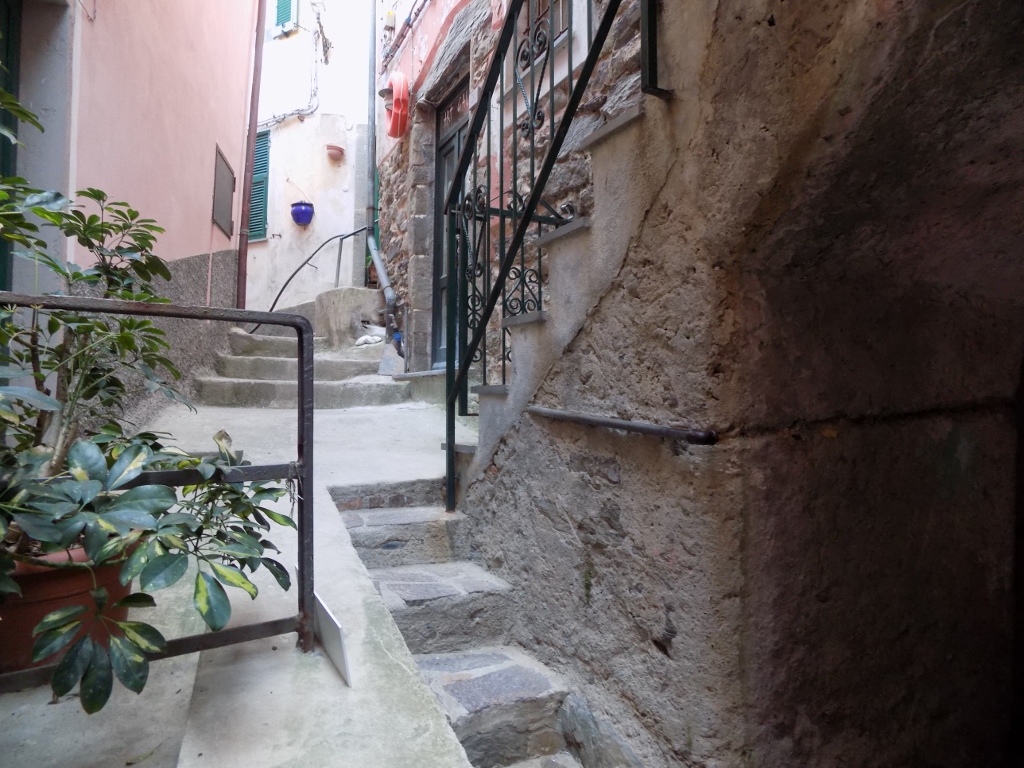 Vernazza, narrow “streets” that lead towards the fortress
Vernazza, narrow “streets” that lead towards the fortress
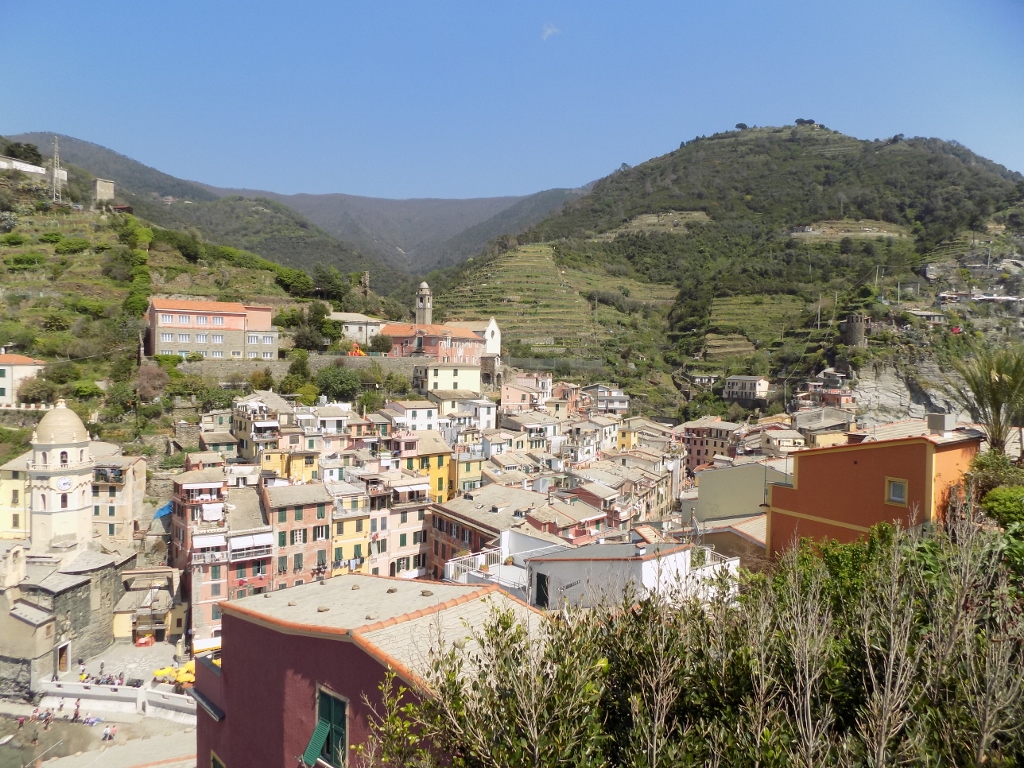 Vernazza
Vernazza
On my way down, I stopped at the same restaurant again and then with a little bit of luck I managed to get a table on a terrace from where I was looking at the sea. The food was also great. Still, after I had finished with the meal, although I didn’t eat in haste and enjoyed the relaxation and the view, I realized I was already well into the afternoon and there were three more villages to visit!
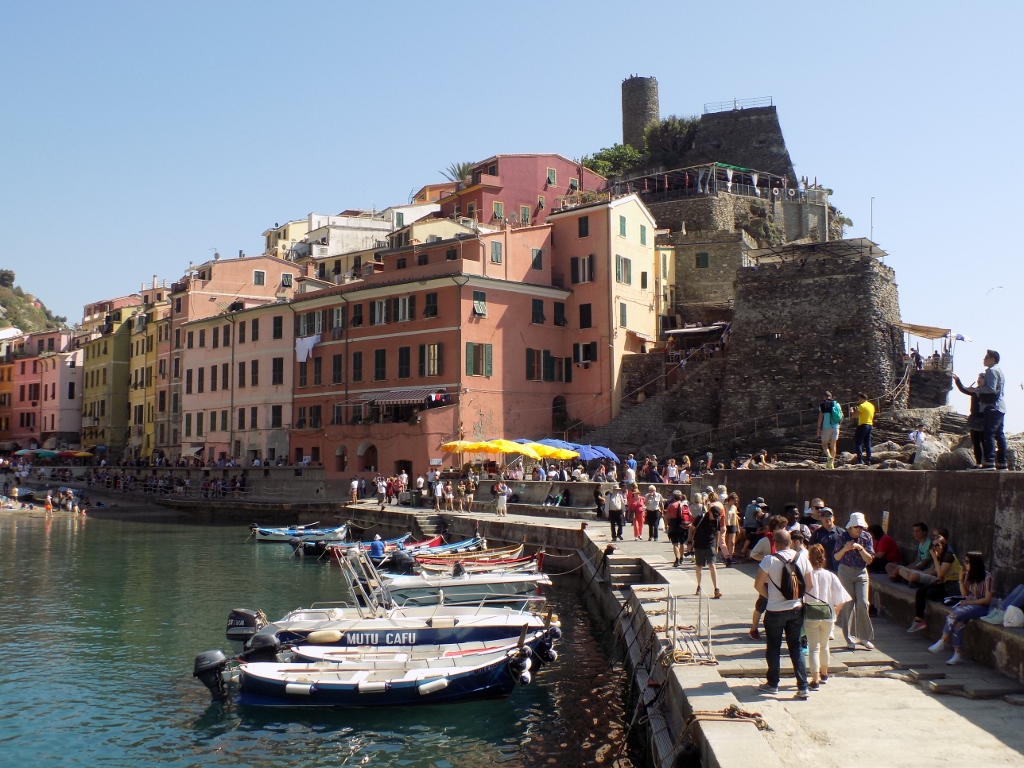 Vernazza
Vernazza
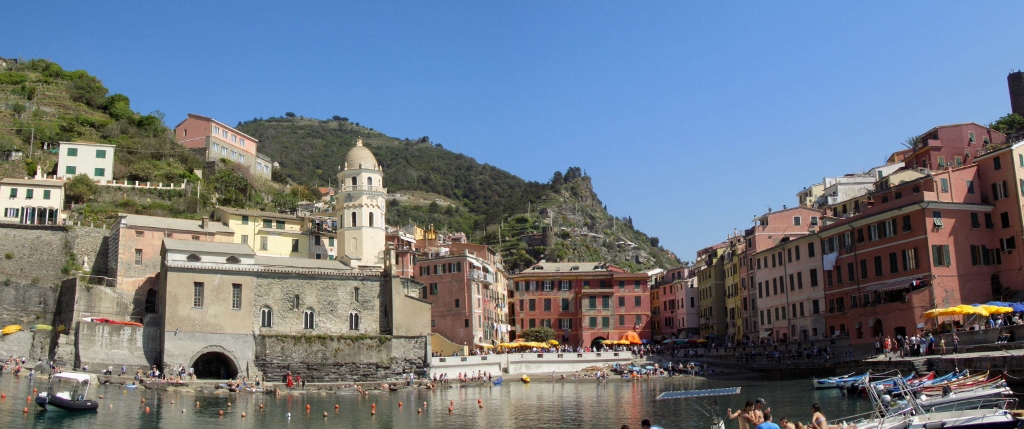 Vernazza
Vernazza
Although the local trains are frequent and with the ticket one also gets the timetable, every now and then there are disturbances to the schedule and in almost every place I wasted valuable time waiting at the railway station for the next train to come. Still, I would not recommend visiting of the villages by car (it is ok on foot, but with proper footwear), since finding a parking place must be a nightmare.
So, I transferred to Corniglia, but there I had to climb again. Namely, this is the only village that is not directly on the coast, but is rather elevated on the top of a high cliff rising from the sea. But, I did not know this in advance. As opposed to the vast majority of my trips, when I get properly ready and organized, and prepare all the information in advance, here I was quite relaxed and on the basis of the first two villages concluded that the third one had to be by the sea. So, when I left the train station and saw a board pointing towards the beach, I headed that way directly. As it turned out, this was completely pointless and walking on a long path that led parallel between the sea and the railway line, with the sea being below and the railway line being above, all of a sudden I noticed zigzag stairs on the hill in front of me and I realized this was the way to Corniglia.
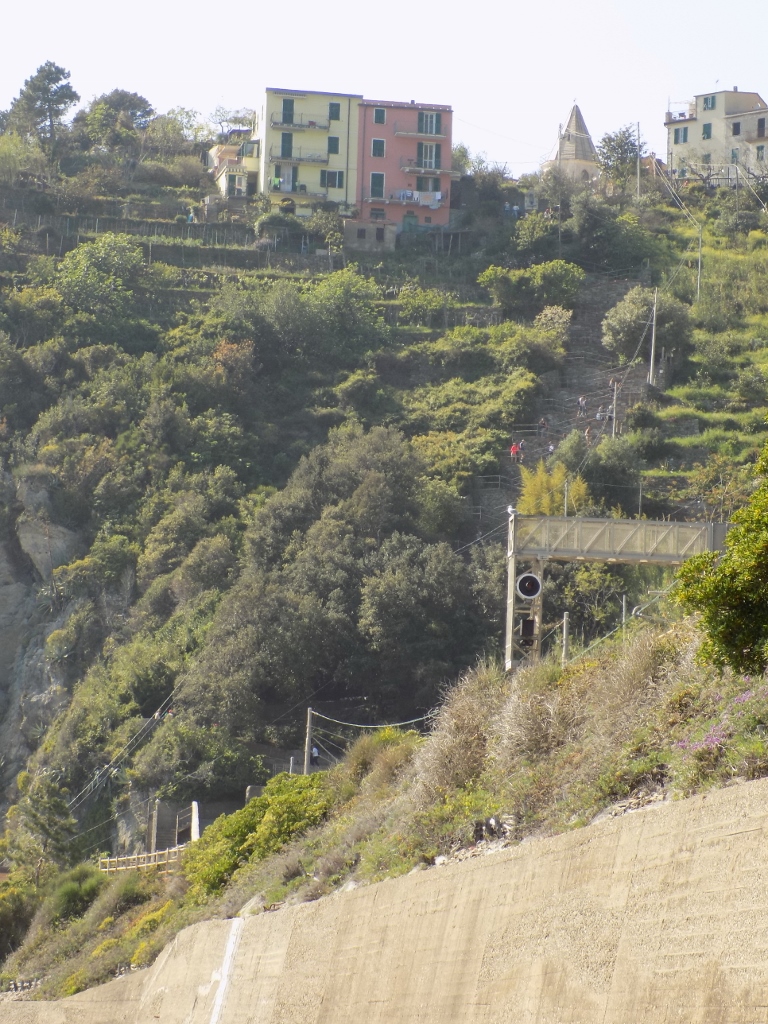 I am below, Corniglia is above and between us there is the railway line and the seemingly countless steps
I am below, Corniglia is above and between us there is the railway line and the seemingly countless steps
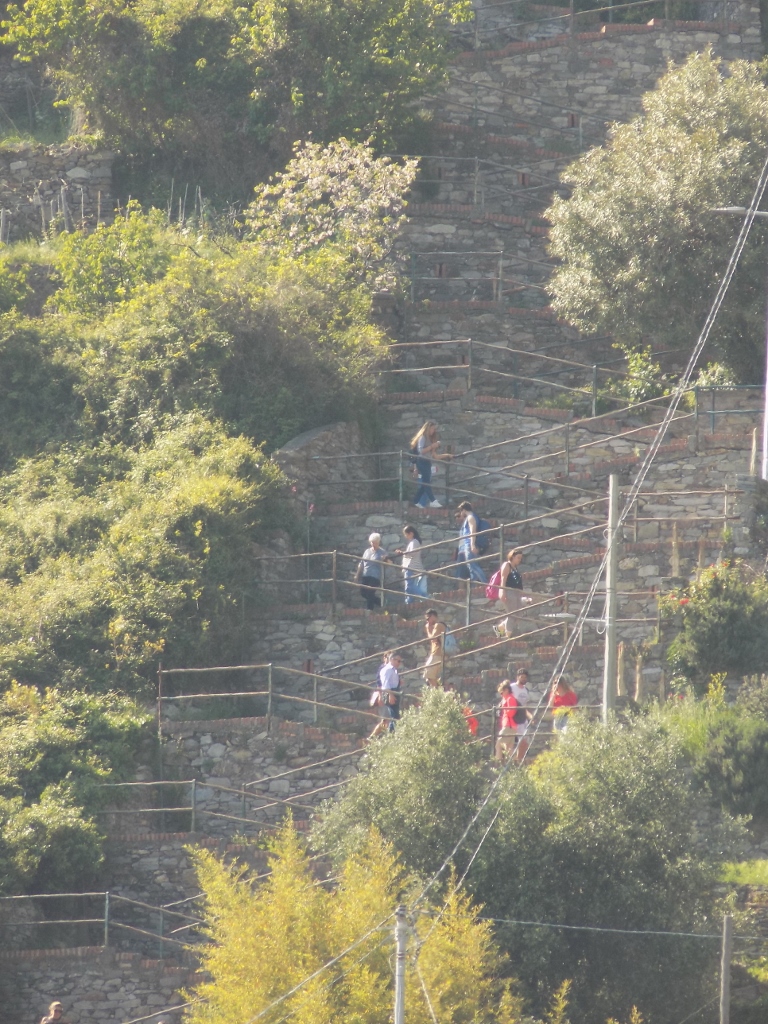 Here are the stairs up close
Here are the stairs up close
This climbing thing was starting to get on my nerves – only up and down, while I was hot and already quite tired. Still, there was no way out. Admittedly, there is a local mini-bus that may take you to the centre of the village, but I could not be bother with its timetable as well. So, there is almost one kilometre from the railway line to the centre of Corniglia, including the climbing of the stairs that go along the almost vertical slope. When I finally reached the top of the stairs, I decided first to go to a church that could be reached only by some more climbing. What the hell! If I’m climbing, I’m climbing all the way.
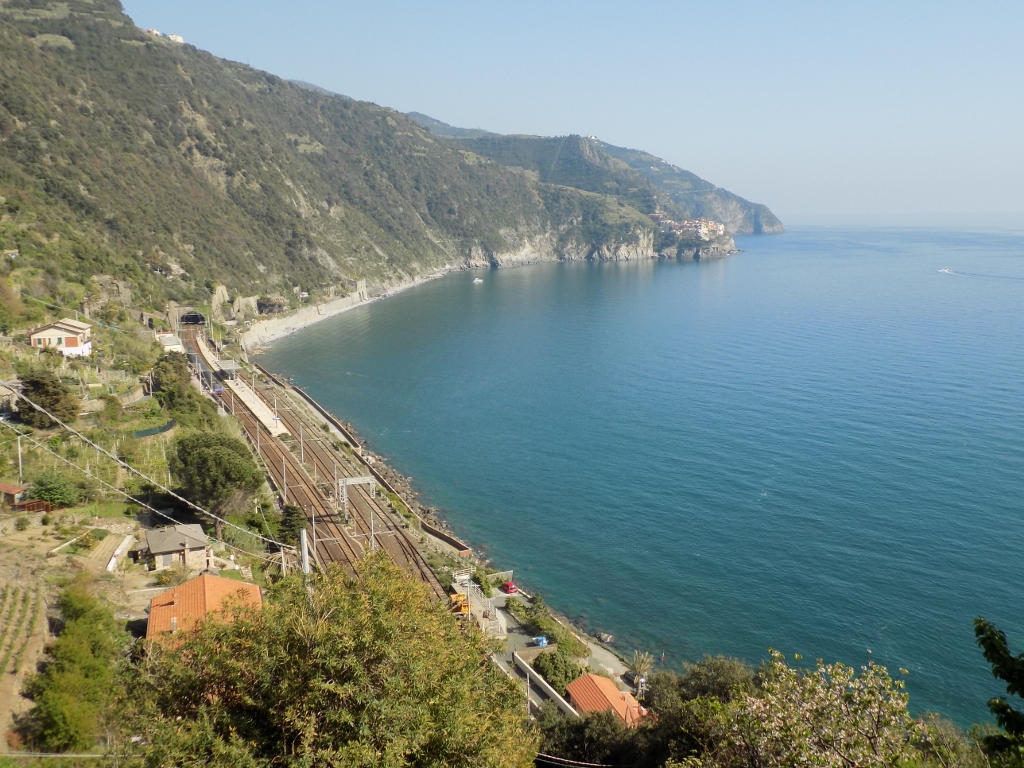 One minute down, the next one up – on the top of the stairs: the railway line is below, Manarola is in the distance
One minute down, the next one up – on the top of the stairs: the railway line is below, Manarola is in the distance
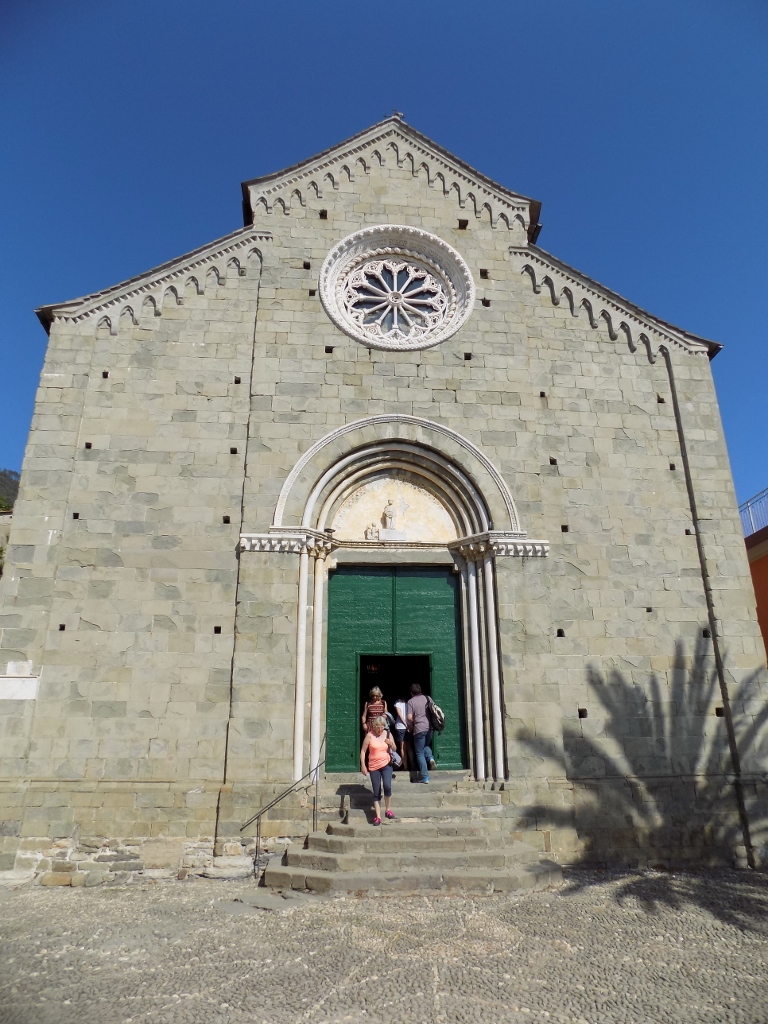 Church of St Peter (San Pietro) in Corniglia with a nice rosette above the portal
Church of St Peter (San Pietro) in Corniglia with a nice rosette above the portal
But, in order to visit the village, it is necessary to go along the streets that keep going up and down. In other words, if you are not fit or if you have problems with your knees, etc., Cinque Terre are simply not for you. There is nothing flat (apart from the walking by the sea in Monterosso). From the church here, you go down towards the centre reaching a relatively spacious crossroad where you can catch the bus going to the railway station, but I actually entered the centre of Corniglia where it was impossible not to enjoy the lovely views of its narrow lanes.
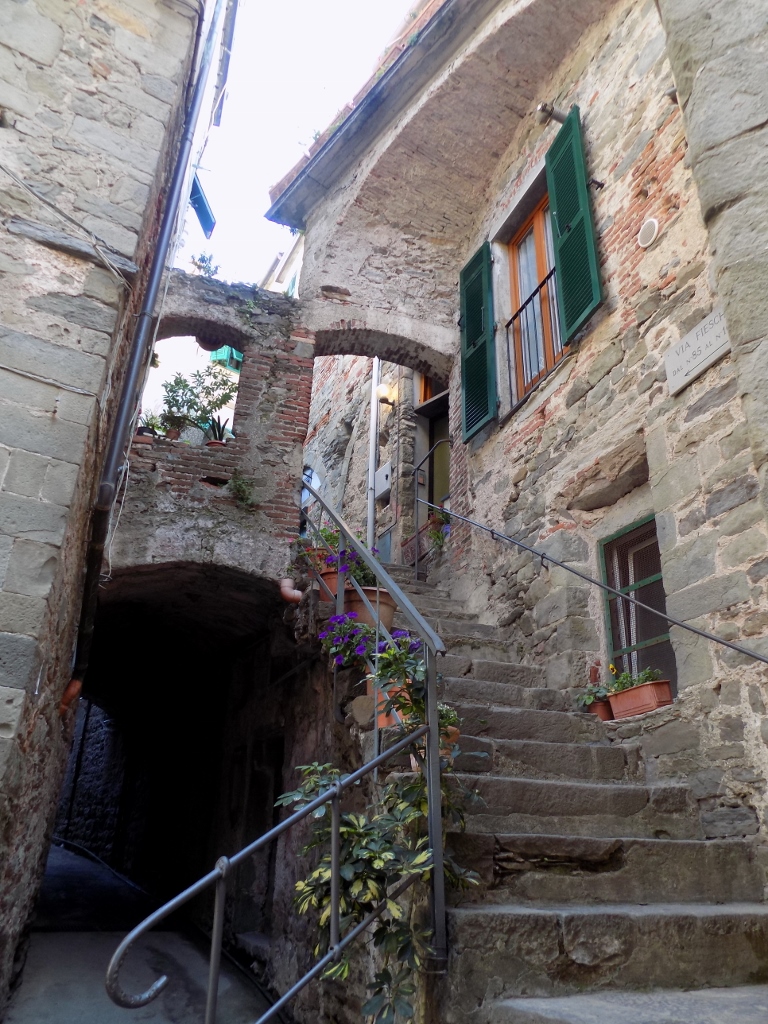 Corniglia, a detail
Corniglia, a detail
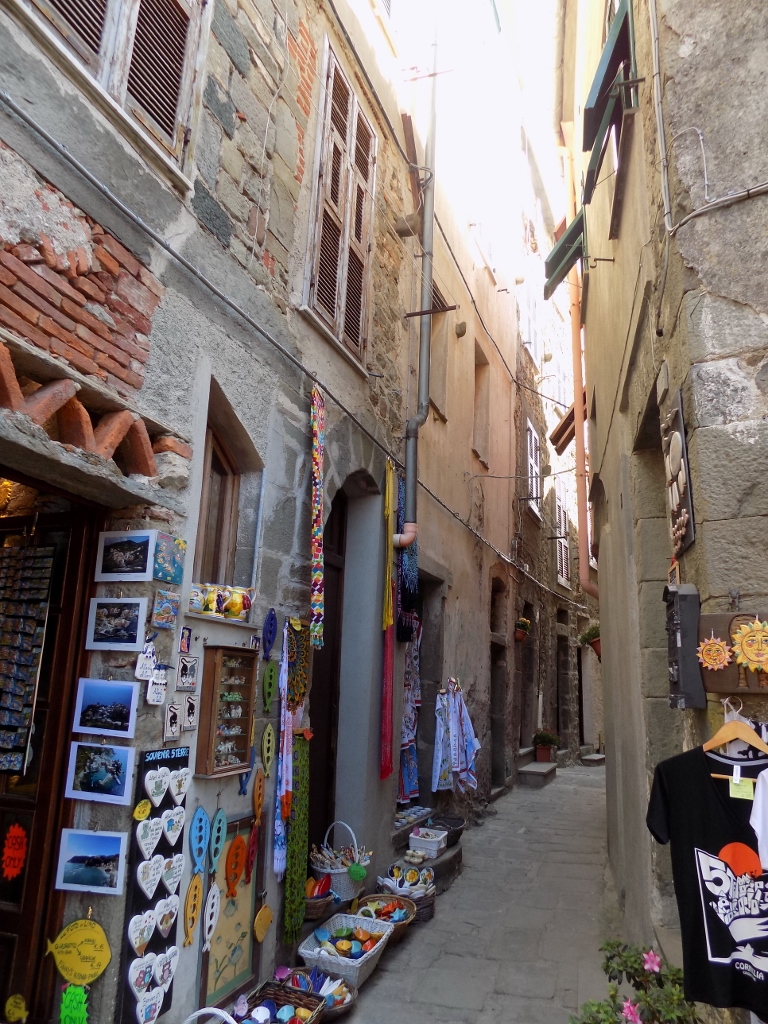 Corniglia, a detail
Corniglia, a detail
Apart from having nice winding and picturesque lanes, Corniglia is interesting in terms of culture and history because it is mentioned in Boccaccio's Decameron. But, I did not care much about it as I was walking through the village at the end of which I found myself on a terrace with a fantastic viewpoint. Taking into consideration the time of the day and the position of the sun, the view at the next village, Manarola, was particularly stunning.
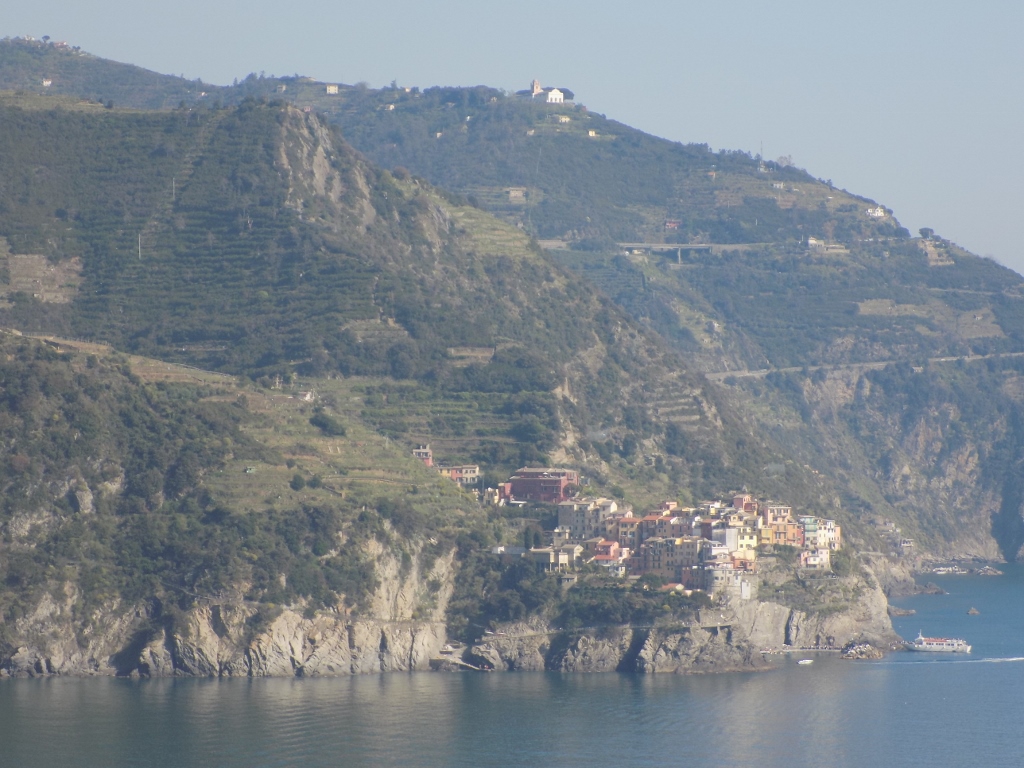 Manarola and its surroundings
Manarola and its surroundings
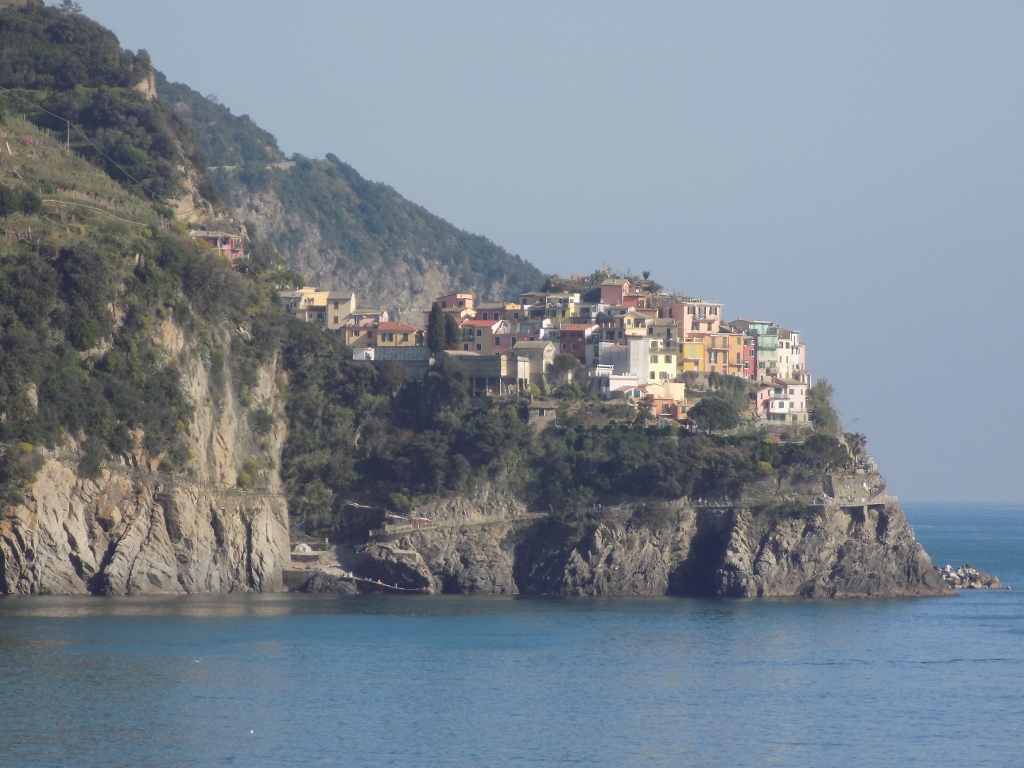 Manarola
Manarola